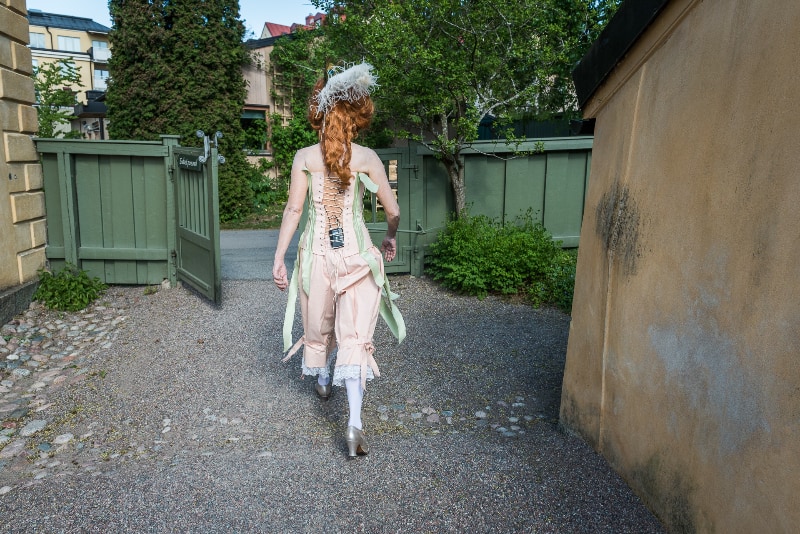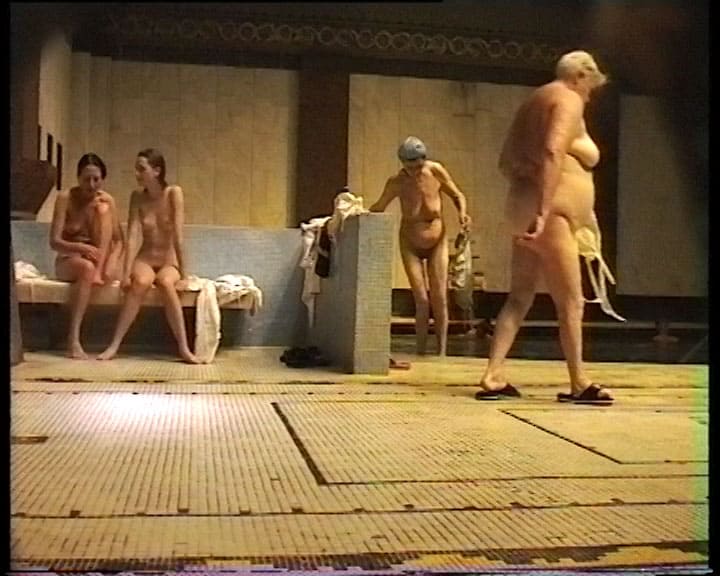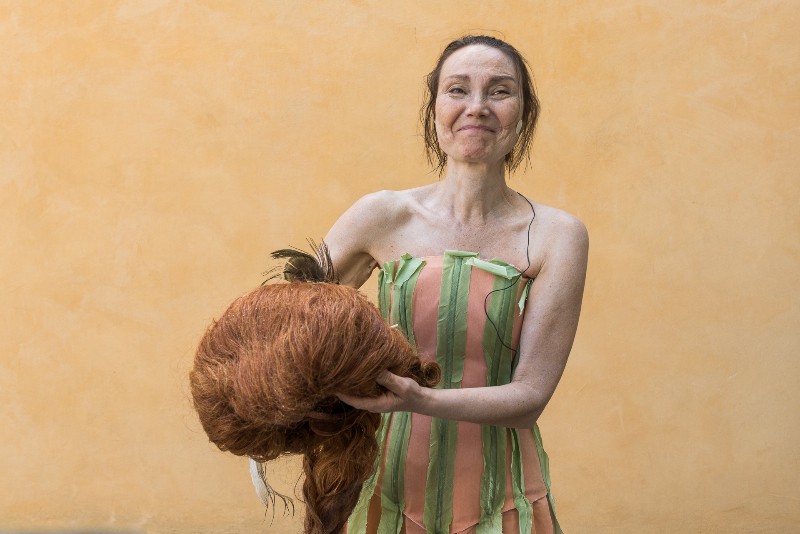
Katarzyna Kozyra is one of the greatest contemporary artists in Poland. Working with sculpture, installation and video, she is also considered to be one of the leading figures of the Polish ‘critical art’ movement – a movement, that started in the 1990s and changed the perception of Polish art abroad. Kozyra exhibited internationally since 1997. Her works were shown in Berlin, London, Amsterdam, Moscow, New York and Venice, where she represented Poland at the Venice Biennale in 1999. In the interview, we discuss her foundation, latest projects and issues of equality and femininity.
Maria Markiewicz: We are currently in the headquarters of the Katarzyna Kozyra Foundation. What’s its main aim?
Katarzyna Kozyra: The main aim of the Foundation is to Monitor. To Monitor the situation within the culture and art, and to monitor it in terms of the presence and situation of women in the public cultural institutions, the education sector and in the art market. A prelude to this research was a report that we published earlier, looking at the number of women teaching and studying in Polish art universities.
MM: And what are you working on recently?
KK: I love these kinds of questions… There isn’t such thing as recently – all my projects are elongated in time… Some were started not so long ago, some came to an end, like our series “Commentators I” and “Commentators II”. This year, we’ve started a collaboration with our partners from the Czech Republic, Hungary, and Slovakia. We are working together on an archive of female artists from Central and Eastern Europe – a platform and a database dedicated to women artists.
We are also working on Urszula Broll’s retrospective, an artist, who although is almost 90 years old, still hasn’t had a solo show in a public art institution in Warsaw. Men, with whom she co-founded an esoteric group “Oneiron”, did not disappear. But she did… Even though she was the one who initiated the group and who translated texts for her male colleagues, without which they would have not become famous, she was soon excluded from their circle. We’re publishing her catalogue and preparing her exhibition, that will open in 2020 in Królikarnia, Warsaw. It will then travel to Jelenia Góra and we would like to show it in Katowice, where Urszula was born.
Finally, we are putting the finishing touches to “Looking for Jesus” world tour. The documentary will be shown in various cinemas that belong to art institutions. At the same time, we are also working on the project about Polish 1967-1975 counterculture. It will be shown in Prague and Budapest.
MM: What about the seminars?
KK: Some time ago we’ve also started an interdisciplinary research project devoted to women in architecture. During the lectures and seminars, women from various fields – sociologists, philosophers, engineers, scientists and architects – will try to answer a question, if women, not men, shaped the space that surrounds us, would it be different? What would be different and why? As we know, the environment in which we all live is not neutral… Scientific and research projects constitute an increasing part of our program activity and we want to continue them in the upcoming years.
MM: There is also a series of seminars inspired by some of your works…
KK: Yes, it’s the “Lost Talks_Warsaw” series, that was initiated by my flagship pieces. During the meetings, we discuss the issues that these works undertake. For example, in the seminar inspired by “Olympia” and the “Bathhouse”, one of the topics was the need to reclaim the female act.
MM: What about Katarzyna Kozyra? Any projects you’re currently working on?
KK: I’m still working on some of the material from “Looking for Jesus”, but there is a work that came after the documentary. It’s “A Dream of Linnaeus’ Daughter”. It will be soon shown in The Museum of Warsaw, as part of the exhibition about animals. It will be used as an introduction to the whole exhibition. In this work, people-animals are belting out the anthem of the European Union, and this corresponds with the curator’s idea for this show.
MM: “A Dream of Linnaeus’ Daughter” seems to refer to the Noah’s Ark, considering the choir members imitating animal sounds while standing on the wooden pallets. Is the Great Flood imminent?
KK: I’m not sure about the Flood, but a flood might as well be on the horizon.
MM: Could faith save us from this “Flood”? After all, “Looking for Jesus” is a film about the power of faith…
KK: Is “Looking for Jesus” about the power of faith… If it is about faith, that’s faith in a more individual, almost egoistic sense… Speaking about “Looking for Jesus” in terms of faith is a misuse… I don’t know what faith is…

Katarzyna Kozyra, “A Dream of Linnaeus’ Daughter”, photo by Katarzyna Szumska, 2018
MM: I would like to talk to you about feminism now. It appears often in your work as an artist and it is also important in the work of your Foundation. Although the number of men and women in the world is roughly equal, it seems to go downhill from there…
KK: It is… Who won’t agree that roles are assigned to us, women, upfront? Women live in a unilaterally programmed reality…
MM: Have you noticed any recent changes for the better?
KK: I’m reading Emily Chang’s “Brotopia: Breaking Up the Boys’ Club of Silicon Valley”. Do you know that the first algorithm was published by a woman? It was in the 1840s, where computers were non-existing! Her name was Ada Lovelace. During WWII many women were working with computers… They needed to press a lot of buttons to tell the computing machine what to do, so this was considered to be similar to a secretary’s job. After the war ended, everything has changed. The number of women in the IT industry started to decrease. Women work as doctors, lawyers and even professors, but their wages are way below to the ones of their male counterparts. Anyway, the game of “influencing reality” is already taking place elsewhere…
MM: Is that the reason why all these great women were consigned to obscurity?
KK: A lot of people were consigned to obscurity, but this is especially true for women.
MM: Is this your mission to rediscover them and bring them back to history? It seems to be the case in “A Dream of Linnaeus’ Daughter”…
KK: It really annoys me that women from my generation didn’t actually have role models to look up to, except for some princesses…
MM: There’s a slight difference between the male and female perceptions of the world… In this context, equal representation might be of paramount importance…

Katarzyna Kozyra, “A Dream of Linnaeus’ Daughter”, photo by Katarzyna Szumska, 2018
KK: A friend of mine told me yesterday that we, women, have to go after it… Another one told me that women and men need each other, because we all have different points of view. And brilliant things are created by people who can see differently…
MM: What would you say?
KK: That we need more people who see things differently… Thankfully, we now have more female directors… Back in the 90s, seeing a film directed by a woman was rare. Entertainment, that shows only one, male point of view is a distortion, a lie and a form of oppression – both for women and men.
MM: Are there any dreams or desires you would like to fulfill? Either in art or in life?
KK: Art is Life… And that’s all…












